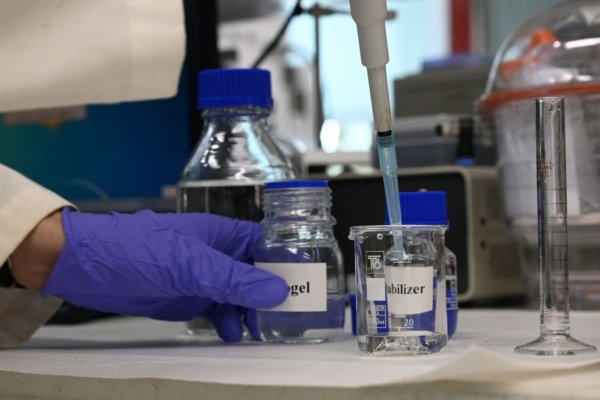In the past, artificial hydrogels could only choose between high hardness and self-healing properties, unable to maintain both characteristics simultaneously. Now, Finnish scientists have developed a special bio-inspired hydrogel that is not only tough but also self-healing, opening doors for applications in drug delivery, wound healing, and artificial skin.
There are many gel-like substances in daily life, including hair gel, aloe gel, jelly, and various other gelatinous substances. Moreover, human skin also possesses gel-like characteristics, combining high rigidity with high flexibility and excellent self-healing capability, enabling minor wounds to heal rapidly within a day.
For this reason, many scientists have been searching for gels that can mimic the complex properties of human skin for use in soft robotics, drug delivery, artificial skin, and various other fields.
Now, a group of researchers from Aalto University in Finland and the University of Bayreuth in Germany has overcome the limitations of hydrogels to jointly develop a water-based hydrogel with a unique structure that mimics the properties of human skin.
The research findings were published on March 7 in the journal “Nature Materials,” garnering over 28,000 views and coverage by more than 57 media outlets, ranking first in related articles.
In this groundbreaking research, the researchers first mixed monomer powder of polyacrylamide (PAAm), fully layered synthetic lithium-montmorillonite nanosheets (a type of clay nanosheet), and water in specific proportions, exposed the mixture to ultraviolet light to allow the individual molecules within the mixture to bond (entangle) together, solidifying into a highly elastic water hydrogel.
This method of producing the water hydrogel containing a large amount of nanosheets makes it as rigid as human skin, with extremely high elasticity and flexibility. The secret lies in the tightly interwoven polymer chains between individual molecules, giving it the ability to heal, while its high mechanical performance is related to the ordered arrangement of clay nanosheets.
The researchers found that the performance of water hydrogels produced varies significantly depending on the ratio of clay nanosheets to PAAm, with the most optimal results achieved using over 1.5 wt% of clay nanosheets and 62 wt% of PAAm, simultaneously maintaining good mechanical performance and self-repair capability.
Additionally, the best-performing water hydrogel was produced using 4.6 wt% of clay nanosheets and 62 wt% of PAAm, achieving an ultimate tensile strength (UTS) of 4.2 MPa and an elasticity modulus of 50 MPa.
The researchers also observed that reducing the PAAm ratio from 62 wt% to 58 wt% resulted in a significant decrease in both elasticity modulus and tensile strength, while a PAAm content of 40 wt% made the hydrogel soft and elastic but lost its original hardness.
Moreover, the researchers subjected these high hardness (clay nanosheet content exceeding 1.5 wt%) water hydrogels to cutting to observe the repair process. The results showed that the hydrogel material could self-repair up to 80-90% after being cut for 4 hours, and almost fully recover after 24 hours.
Furthermore, this water hydrogel can adhere to materials such as glass, aluminum, copper, and birch wood. With just a 0.5mm thickness and a size of 2 square centimeters (cm2), it can support a weight of 2.5 kilograms.
Olli Ikkala, a professor of applied physics at Aalto University, expressed to the university’s newsroom, “This work demonstrates how biological materials inspire us to explore new properties of synthetic materials. Imagine having robust, self-repairing skin or synthetic tissues that can autonomously repair. Although there is still a long way to go before practical applications, this result represents a key leap forward.”
Hang Zhang, a postdoctoral researcher in applied physics at Aalto University, added, “We noticed that the polymer layers in the water hydrogel entangle like fine wool yarn, with a random arrangement order that makes it challenging to distinguish these molecules. Additionally, the molecules in the hydrogel are very active and mobile, allowing them to quickly aggregate back together after being cut (rapid healing).”
He further stated, “In the past, developing a hydrogel that combines hardness, toughness, and self-healing capabilities has been a challenge. We have discovered a mechanism to strengthen traditional soft hydrogels, which could revolutionize the development of bioinspired new materials.”

